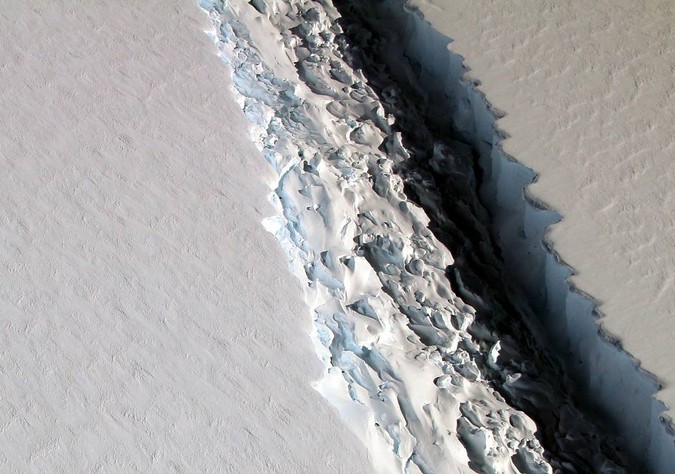The Wrack
The Wrack is the Wells Reserve blog, our collective logbook on the web.
The Wrack is the Wells Reserve blog, our collective logbook on the web.
 The following was published in the Biddeford-Saco Journal Tribune Sunday edition, 1/22/2017, and Making It At Home's 1/25/2017 issue.
The following was published in the Biddeford-Saco Journal Tribune Sunday edition, 1/22/2017, and Making It At Home's 1/25/2017 issue.
It’s morning in Antarctica. It’s high summer in the Southern Hemisphere, and warmer ocean water and breezes have lifted the temperature on the Larsen C ice shelf to a balmy 32 degrees. Like a rifle shot, the ice occasionally gives off a pop that finds no place to echo across the flat, white, featureless plain.
It’s featureless except for a large crack, that is. A crack more than one hundred miles long, three hundred feet wide, and a thousand feet deep. It’s a grand canyon through the ice, and it is growing.
Every day, the fissure gets a little wider and longer. What began as a hairline fracture decades ago is now racing through the ice at 10 miles per month. The length of the crack has almost doubled in the past year alone.
Just 12 more miles of ice remain. That’s all that holds a titanic iceberg, the size of York and Cumberland counties combined, to the Antarctic continent. When this 10,000-year-old shelf of ice finally snaps off, sometime in the coming months, it will open a doorway to the ocean for the hundreds of cubic miles of land-bound glaciers behind it. Once those start their inevitable slide into the sea, global sea levels are projected to rise by a few inches.
Well, no big deal. What’s a few inches of sea-level rise, among friends? What’s one more irreversible crack in the polar ice? Some penguins will get a new cliff in their backyard, some scientists will have some exciting satellite photos to animate. Change happens every day.
But to me, it’s worth noting the changes that happen once in a generation, or even once in 400 generations. The awe of “unprecedentedness” is a feeling I’m getting more accustomed to in this 21st century, as more and more things happen that have never happened before in our recorded history.
This is change I can believe in, because I can see it right before my eyes. I can’t help but appreciate the momentous nature of an ice sheet collapse – one day, a featureless plain; the next, a floating island of ice the size of Delaware. It’s a break with the past that cannot be halted or repaired. There will be no resolution but separation.
As one part of Antarctica secedes from the rest, I wonder about what is to come. Human-caused climate change has not yet been implicated in the looming collapse of the Larsen C ice sheet, but the Larsen A and Larsen B sheets both splintered in the past 25 years as global temperatures reached unprecedented levels. If we saw this coming, we certainly didn’t try to stop it.
And that’s fine. We’re not in charge of the ice; forces seemingly beyond our control have steadily opened this rift across the Larsen C. Hey, disruption is the new normal. Just because we’ve never seen our polar ice caps go all Humpty-Dumpty doesn’t mean we shouldn’t welcome this new chapter in the saga of the planet. It’s morning in Antarctica.
Nik Charov is president of Laudholm Trust, the nonprofit partner of the Wells National Estuarine Research Reserve in Wells, Maine. His monthly column, “Between Two Worlds,” ventures forth from the intersection of art and science, past and present, glacier and sea. More at wellsreserve.org/twoworlds.